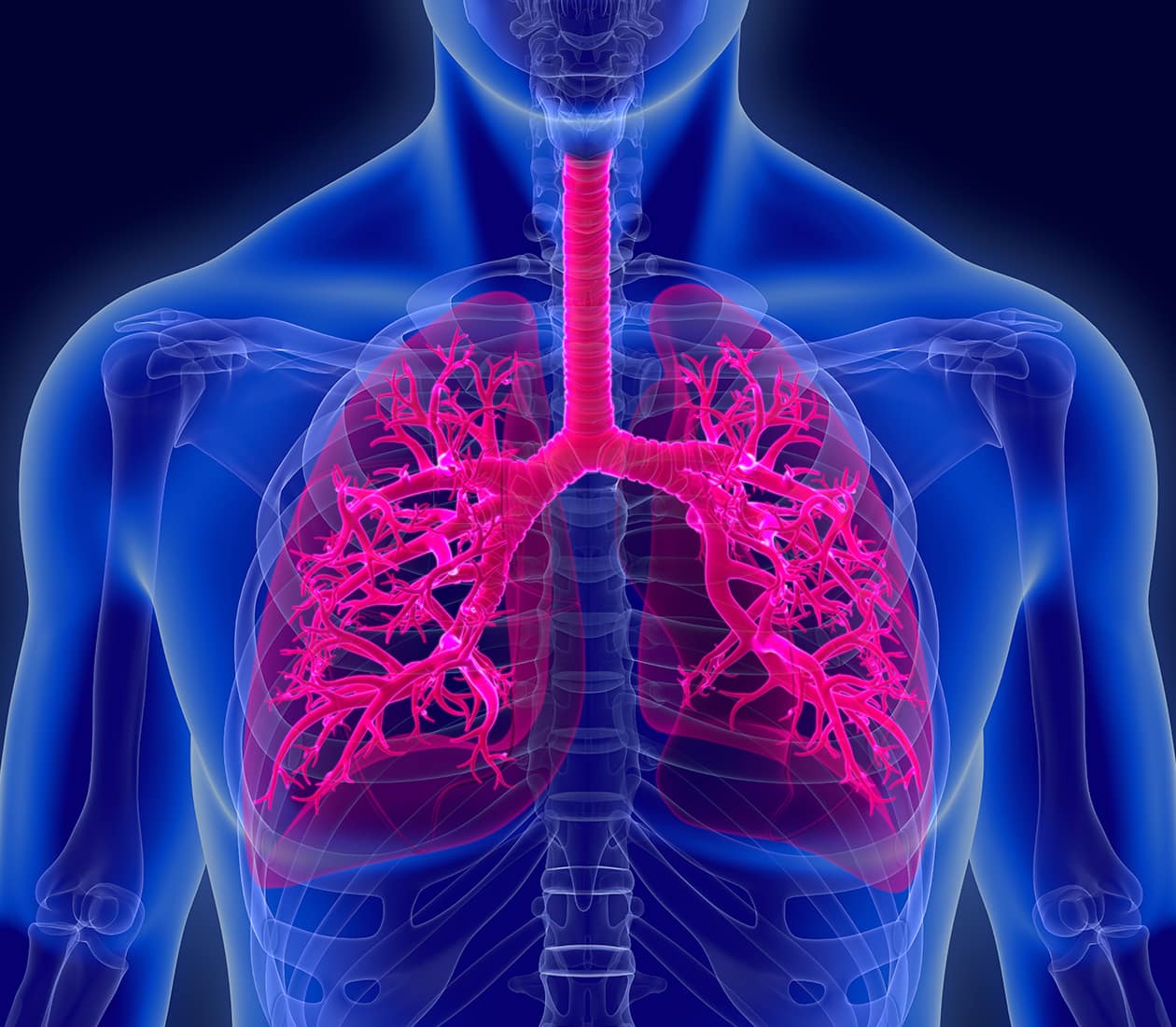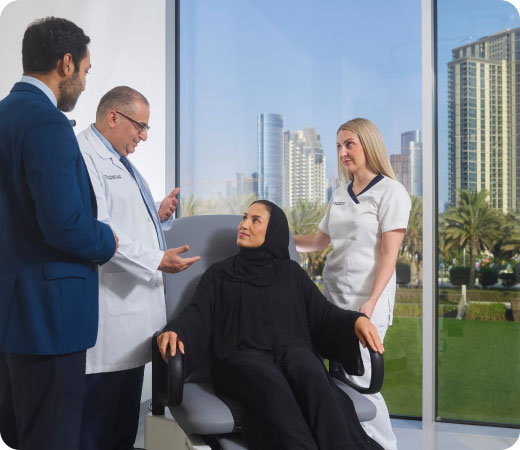
The Tracheal Tumors Program at Cleveland Clinic Abu Dhabi provides specialized care and support for people diagnosed with Tracheal Tumors.
The Tracheal Tumors Program at Cleveland Clinic Abu Dhabi provides specialized care and support for people diagnosed with Tracheal Tumors, close to home. The trachea (airway tube or windpipe) is the airway that runs from your larynx (voice box) to your bronchi, which leads to your lungs.
Every patient who comes to the Tracheal Tumors Program receives Patients First care throughout diagnosis and treatment, which may include surgery, chemotherapy, and innovative, advanced approaches to treatment. Our thoracic and head and neck experts have extensive experience in surgically treating and removing tracheal tumors.

We offer a comprehensive program supported by a multidisciplinary team of regarded thoracic and head and neck experts. Taking a team approach to your treatment, care is coordinated among our specialists, and we offer a range of support services, ensuring you receive the highest quality care. This collaborative approach allows us to focus our entire team’s expertise and energy on providing the best strategies for diagnosing and treating our patients, supporting the best possible outcomes.
Our multidisciplinary tumor board meets once a week to discuss each patient. Specialists in treating lung cancers and tumors, esophageal cancer and other cancers of the chest sit together to talk through the best treatment options, including clinical trials, for each individual. Patients get the benefit of several expert opinions.

Tumors originating in the trachea are rare, but tumors which have spread there from other areas (including the lung, esophagus, thyroid, or larynx (voice box) are more common. They result in a narrowing at the opening of the trachea and limit airflow to the lungs (regardless of whether they are malignant or benign).
The three most common trachea carcinomas (malignant tumors) are:
Tracheal tumors can also be non-cancerous but may require treatment if they are restricting airflow.

As tracheal tumors can restrict airflow, the first symptom is often breathing difficulties. However, there are many other conditions that can affect breathing, so your doctor will look for other symptoms as well:
Squamous cell carcinomas are believed to be a direct result of smoking. Hemangioma (a common vascular birthmark) which can spread from the face to the neck is also believed to be a risk factor.
Always report any of the symptoms listed above to your doctor so they can rule out a tumor.

Tracheal tumors are rare and usually slow growing. With no specific symptoms, they can be difficult to diagnose and can be misdiagnosed as another condition like bronchitis, asthma, or chronic obstructive pulmonary disease (COPD). The following diagnostic tests may be ordered for your doctor to determine the cause of your breathing problems:
Treatments for tracheal tumors encompass minimally invasive, robotic, open surgery, chemotherapy and radiation. Depending on the stage and type of your cancer, a combination of surgery and medical and/or radiation oncology may be recommended. Treatments include:
Radiation therapy can be used to treat tracheal tumors that are large or involve more than 50% of the trachea or have spread to areas such as the lymph nodes or other areas of the chest. It can also be used for patients who are not candidates for surgery. The two most used types of radiation therapy include:

The Tracheal Tumors Program at Cleveland Clinic Abu Dhabi is comprised of a multidisciplinary team and offers specialized support in areas ranging from diagnostic imaging to post-operative care. Caregivers involved in this program include:

Speak with our Contact Center for assistance
Request an Appointment 800 8 2223 International Patients